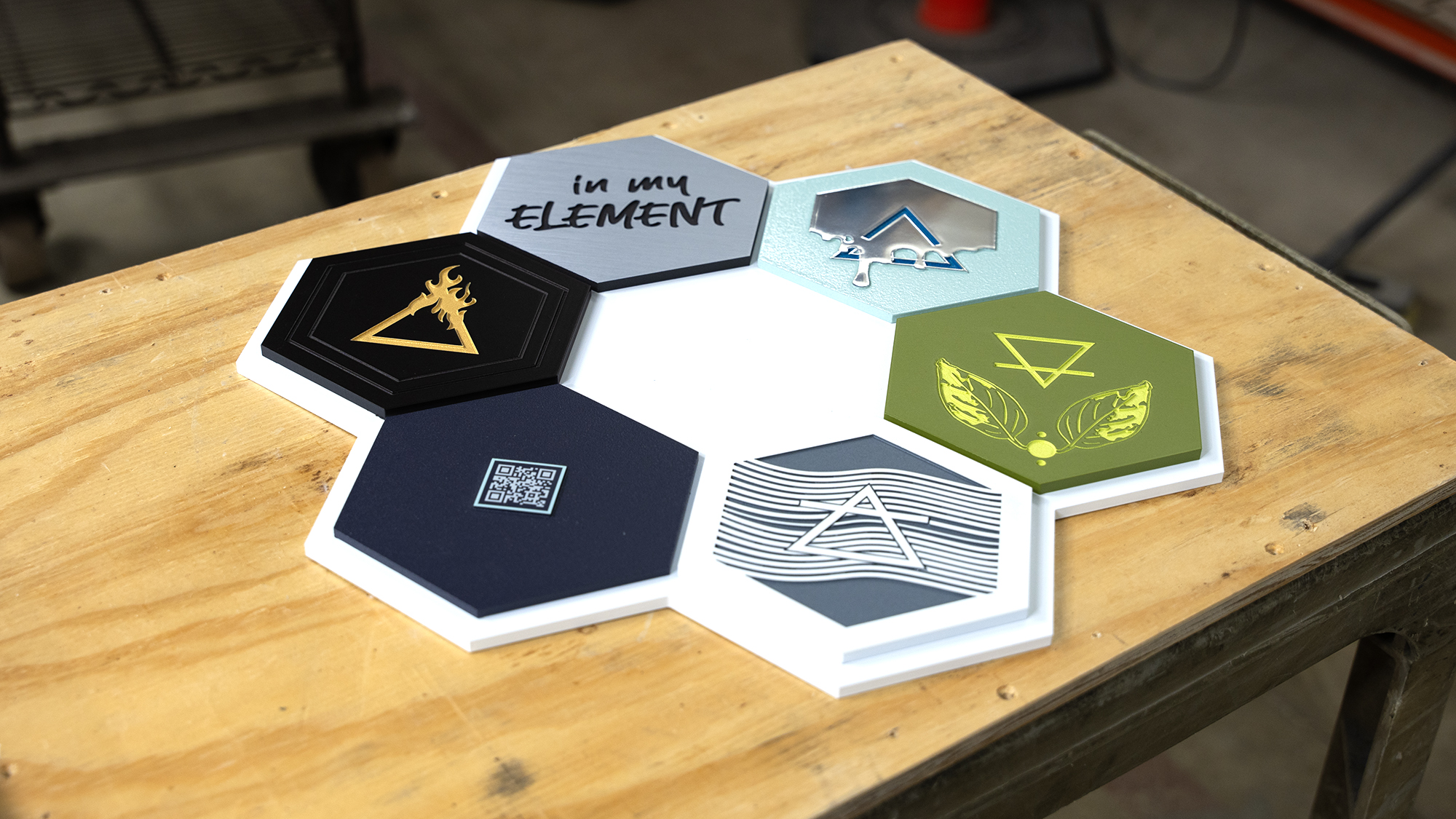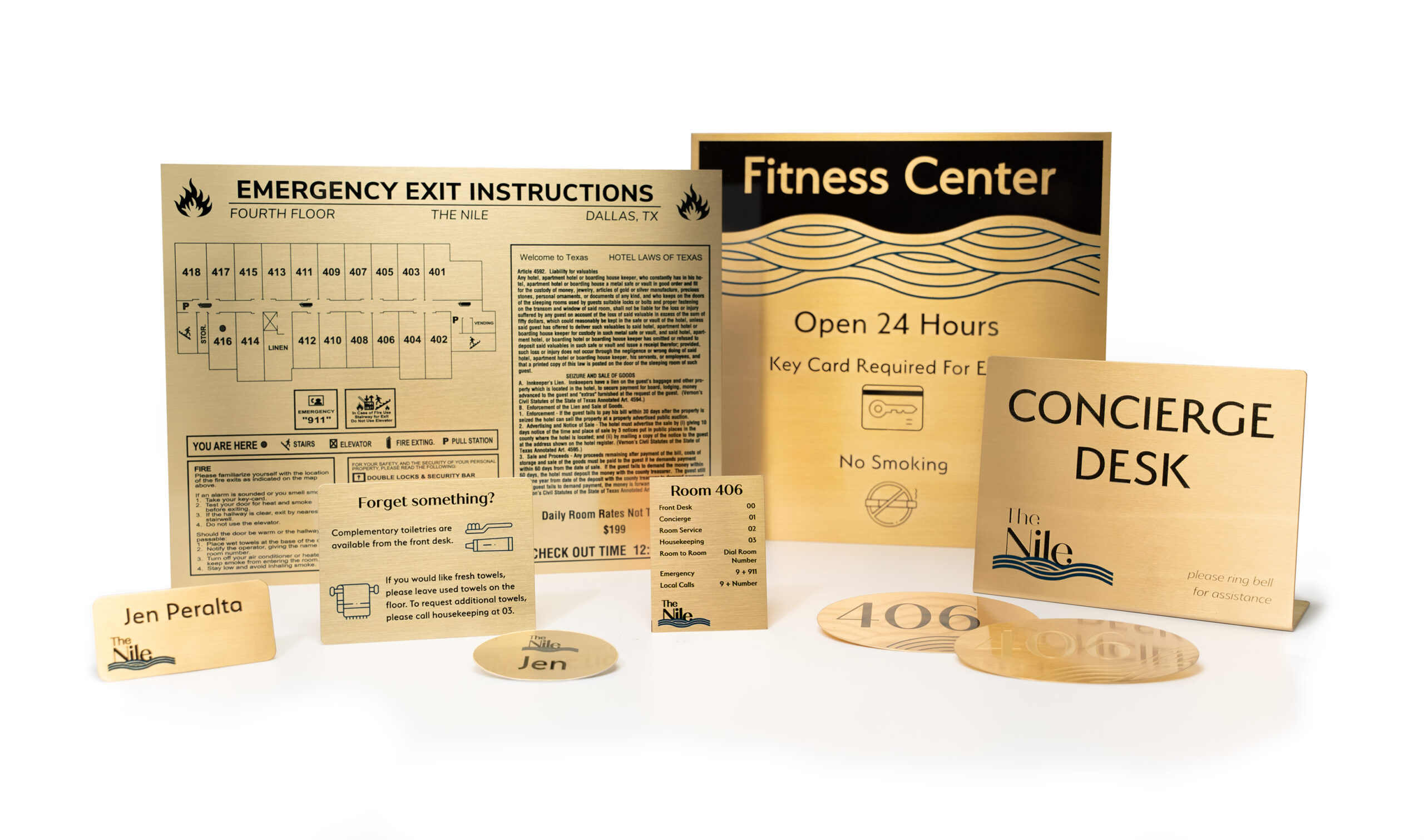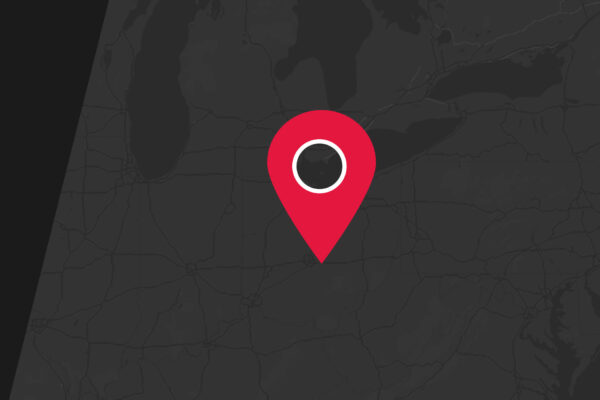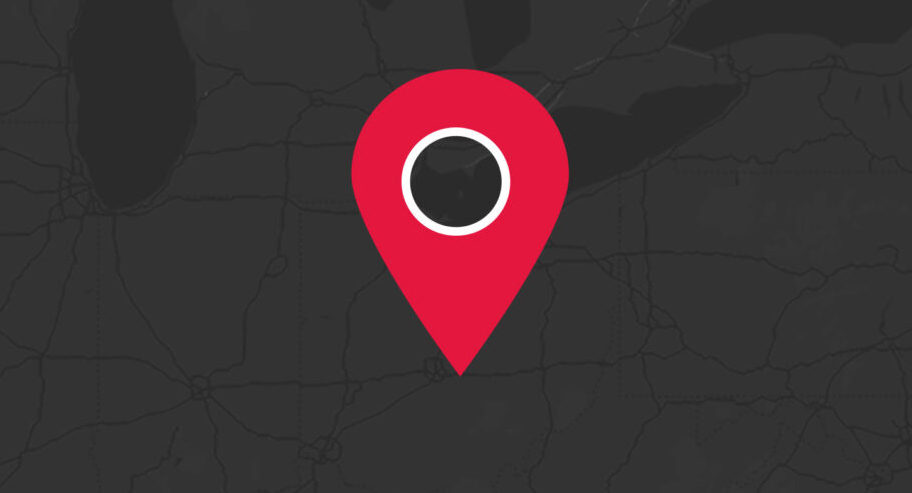This guest blog post is written by sign designer Mars Bravo from Signs from Mars.
I started my solo sign-making journey as Signs from Mars with two goals in mind: channel my work ethic with my passion for sign making and maintain my creative freedom. I design custom signs for my customers that allow them to convey messages beyond words and follow my motto, "Don't just tell people you're here, show them.”
Sign making reminds me that we deserve to be heard, seen, and understood. Communicating the vision of a sign and then taking it from an idea to a tangible object is no easy task. I’ve struggled to articulate my intricate design ideas to sign manufacturers and fabricators and resort to rough sketches with vague information. This can lead to misunderstandings during manufacturing and sometimes disappointment with the final product.
However, through trial and error, I have learned to improve my communication and ensure my vision translates accurately by providing comprehensive information to customers, manufacturers, and installers. By incorporating various communication methods and learning as much as I can about my manufacturers’ must-haves, I can create a powerful outcome, and constantly achieve that moment this is exactly how I envisioned this sign to be!
We are the Industry of Communication
We're in a transition period, post-pandemic. A sort of in-between where traditional and modern communication styles intersect, making communication more complex than ever before. Choices like sending a text versus a phone call or sending an email instead of a face-to-face visit are becoming standard practice. Generational preferences impact this too.
In a profession that's heavily reliant on communication, the sign industry stands out greatly. It takes approximately ten job positions to make a sign from start to finish, or hats for solo companies. Our common mission? To articulate clear and effective messages, or to direct people to their destinations. We are in the business of "SAYING SOMETHING!”
In the sign industry, effective communication is vital between sign designers, manufacturers, painters, installers, sales, project managers, and most importantly, customers. But often, the differences in our communication styles and general knowledge about signs can create a disconnect, which can undermine the integrity of the sign project. Communication is not just about conveying information anymore; it's about how we convey it. It also involves looking beyond the literal meaning and reading between the lines to reveal more than what is directly communicated.
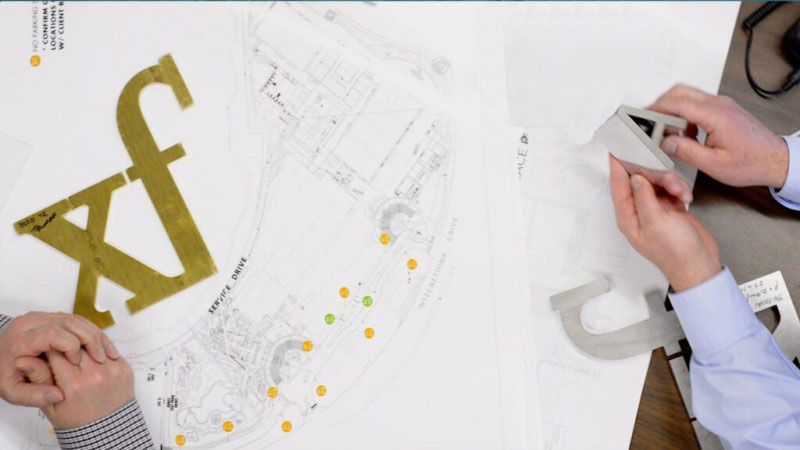
All Hands-on Signs
Over the years, I’ve noticed to excel as a sign designer, you must learn how to use the tools and understand the materials from capabilities, limitations, and mounting methods to pricing. It’s no longer a challenge for me, but an exciting task to navigate the different tasks each role needs to continue in the process. I learned how to “talk the talk” and understand the different dynamic job positions in any sign shop to achieve the sign outcome exactly how I envisioned it.
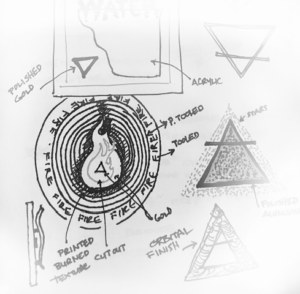
Specifying details in my shop drawings like letter thickness, overall sign size, paint finish type, material type, and any custom requests that may need extra attention before or during installation ensures my manufacturers follow my sign vision. Using visuals such as photo samples or clear mock-ups can further enhance understanding.
Effective communication not only clarifies expectations but also creates a culture of innovation and guidance, open to sharing opinions and suggestions that can result in a better outcome of the sign project. Whereas a “my way or no way” attitude reduces collaboration and stifles creativity and input from others.
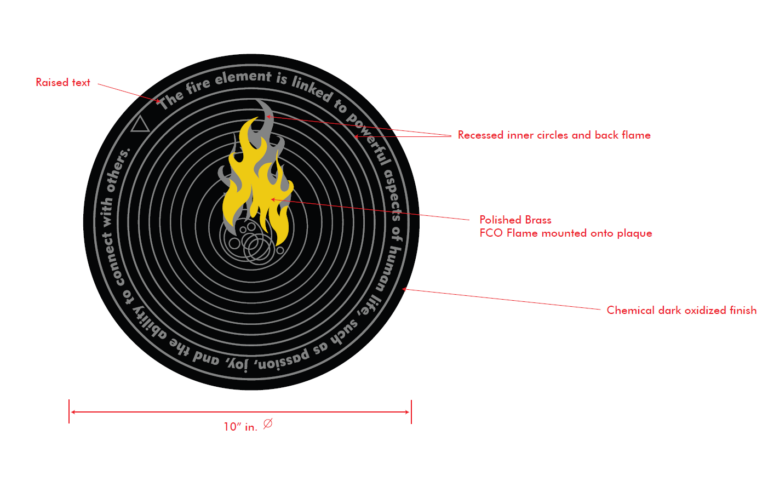
In any industry, guidance is essential for growth and success. In my experience, sign manufacturers offer valuable expertise and support throughout the project’s lifecycle. Acting as a link between all other signage roles, they ensure smooth coordination and maintain quality standards from concept development to installation methods. Manufacturers play a crucial role in achieving successful outcomes but are often the first to be held at fault when things don’t quite turn out.
While understanding the root of any issue is important, in our sign industry, time is precious. Rather than spending it assigning blame, I find it more productive to focus on solutions. After all, I'm part of the team of whomever I choose to work with.
In my recent partnership with Gemini, I challenged myself to redefine the traditional take on plaque design. Throughout this process, I needed extensive support and communication. I utilized various methods to keep Gemini updated, including online meetings, emails, phone calls, and texts. It required significant effort to convey my design ideas to non-designers and the layout team to ensure they were accurately translated into production.
I requested a sample kit of different materials so I can see how they combine and show photos to Gemini of the finishes I chose to avoid any confusion. By applying everything I’ve learned, the final plaques turned out exactly as I had envisioned. This is the addictive feeling of designing signs and witnessing them become tangible objects.
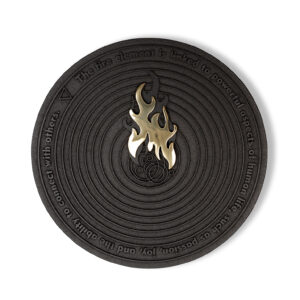
My Advice to Other Sign Designers
The concept of communication is simple for me to understand. But implementing it? That's where consistent effort is necessary. Here are my tips to help other sign designers succeed:
- Prioritize Clarity + Consistency: Ensure your sign project’s drawings or requests are simple to understand and free of added details that might confuse others. Define the purpose of the project to keep everyone on the same page. For example, is the sign for interior use or exterior use as they have different fabrication approaches. With clear direction, maintain consistent updates on sign projects to keep everyone informed and limit misunderstandings.
- Practice Active Listening: Listen without planning your response while your customers or manufacturers are talking. Try to understand and respect the emotions or perspectives of others. Maintain composure in challenging situations and celebrate others’ victories. Paraphrase what you’ve heard to ensure you’ve understood correctly and to show that you’re engaged.
- Understand Communication Preferences: Take time to learn how different team members prefer to communicate, whether it’s through email, face-to-face meetings, instant messaging, or a good ol' pen and paper. Adjust your communication style to fit the preferences of others, when possible, to ensure the message is received clearly.
- Encourage Open Dialogue to Build Strong Relationships: Encourage your manufacturers to share their thoughts and ideas without fear of judgment. Communicate with your customers when you can offer a better option from their initial sign request. This will help build trust and support.
- Mix and Match: Balance digital communication with face-to-face interactions with your vendors and customers to build stronger relationships. Friendly reminder to back up your artwork files in case of any technical issues.
- Be Proactive: Take initiative and act in anticipation of future problems, needs, or changes. Proactive behavior often includes planning, foresight, and preemptive measures to ensure positive outcomes or mitigate potential risks. For example, something as simple as asking your manufacturer about the specs of any given material to use on your next design.
- Continuous Improvement: Regularly assess the effectiveness of your communication strategies and make improvements as needed.
Effective communication is not just about transmitting information—it's about understanding, collaboration, and adaptability. By embracing diverse communication styles and promoting open dialogue, we can navigate the complexities of our current communication styles and bridge the gaps between generations or different roles. We should strive to be open-minded about learning the different ways how we can communicate with each other within the industry and with our customers to constantly achieve our best work.
We have gone from print media like newspapers and letters to phone, radio, then television, and most recently, the internet, with new methods to communicate. Each transition brought its own challenges, nuances, and uncertainties, leaving some people unable to fully adapt. I wonder how can we blend old and new methods of communication to improve our understanding? Are most forms of communication equally valid or necessary? I think so. I look at methods of communication as different tools; the trick is in learning how and when to use them.
The Indianapolis Star predicted the future of television in a 1927 report, envisioning a world where distance would no longer be a barrier to communication. Yet, despite the world seemingly shrinking due to technological advancements, like being able to have meetings online with Gemini, Inc. while being 1,919 miles apart, there's a growing communication gap. While various factors contribute to this gap, it's important to find ways to bridge it, not only between generations but also between different professions and roles.
Now, if you are doing everything you can, but the dynamic still feels unbalanced with whom you’re working, don't hesitate to explore your options. Find people who are willing to match your level and style of work ethic, are willing to communicate effectively, and share your vision. After all, we, sign-makers, are here to say something.
About Mars
Mars Bravo, owner of Signs from Mars in Culver City, CA, is a visionary sign designer driven by her passion for innovative signage solutions. Combining creativity and purpose, she advocates for education and beautification in the sign industry. Mars's journey in design and entrepreneurship led her to establish herself as a significant presence in the field.
As the driving force behind her business, she transforms ordinary spaces into extraordinary ones through artistic signage, pushing the boundaries of conventional design. Mars actively engages in initiatives that inspire and uplift people, aiming to create not just signs but narratives that resonate with people on a deeper level.


